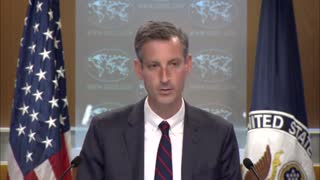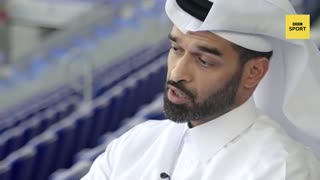The 'cool story' of Qatar's World Cup stadiums || live news india 24x7
The 'cool story' of Qatar's World Cup stadiums || live news india 24x7.
#worldcup
#qatars
@qatarsfootball
The driving force behind the cooling innovations for the FIFA World Cup Qatar 2022 arenas, has uncovered the subtleties of the entire cycle.
Nicknamed 'Dr Cool', Dr Saud Ghani, teacher of mechanical designing at Qatar University drove the Qatar National Research Fund (QNRF) research project bringing about the improvement of the cooling innovations in the arenas for the forthcoming World Cup.
"Planning cooling for an outside arena was really difficult for everybody," Dr Ghani said. "The greatest plan houses on the planet had never planned a cooled arena, so, it was passed on to us. Also, with manageability, measured quality and usefulness as a top priority, we made it happen."
Dr Ghani's arrangement was to make and keep a microclimate bubble inside the arena, an assignment that intrinsically becomes more enthusiastically in outdoors arenas. "The greatest test in cooling an outdoors arena is preventing outside warm air from entering it-the characterizing of the collaboration limit between within miniature air pocket and the external full scale environment. This implied that a point by point streamlined investigation should have been done on the arena structure and impression to all the more likely see how to utilize its plan to limit the invasion of the warm air into the arena," he clarified.
His group started the work by 3D-printing scale models of the proposed arenas for the World Cup. These models were set in an air stream so that streamlined testing might perceive how their structure and size was interfacing with the outside wind and how it very well may be gotten to the next level.
"After the 3D printed model was set in the air stream, smoke - addressing wind - was pushed out at various tensions to test how the plan responded to twist at various velocities and different approaching headings," proceeded with Dr Ghani. "Then, at that point, we utilized laser sheets and cameras to dissect the progression of air over the plan, remembering the way for which air enters and leaves the arena."
The estimations were then handled utilizing a Computational Fluid Dynamics programming to see what the temperature would be at every level. Variations, for example, number of observers and sweat created were added, and afterward mathematical reproductions were done to see their impact on the temperature conveyance inside the arena.
This progression was basic in guaranteeing that the arenas' versatile streamlined plan would uphold the cooling system inside the arena instead of neutralizing it.
Non-specialized angles were likewise adjusted with the assistance of this progression. "In Al Bayt Stadium, the underlying plan included a more obscure hued façade however was subsequently different to a lighter shade," said Dr Ghani. "This straightforward change inactively cut down within temperature by five degrees Celsius - a speedy success."
When the plans were advanced, the subsequent stage was to begin dealing with the real cooling framework that would make a microclimate inside the arenas. Dr Ghani's 'aha' second in the venture was the point at which he understood that he didn't have to cool the whole arena however just the battleground and the observers.
"We expected to begin from the battleground and go up to a stature of two meters over the most noteworthy observer seating level. Siphoning out gigantic measures of cold air to cool the whole open space is wasteful, best case scenario. We siphon the specific measure of cold air into the specific spot, keep up with it and contain it-then reuse everything," he commented.
Then, at that point, he chipped away at fostering a spot cooling framework - one which just cooled target regions. After broad examination and testing, the group concocted a cutting edge cooling innovation that blows cold air on the players by means of football-sized spouts close by the pitch and more modest air diffusers under every onlooker's seat, pushing unconscious air at lower leg level.
Dr Ghani's methodology isn't simply inventive, yet additionally manageable. Utilizing the air dissemination procedure, the air is then stepped back and yet again cooled prior to being pushed out.
Whenever got some information about the requirement for cooling assuming the competition is played in winter, Dr Ghani said that it was tied in with figuring long haul and having scenes that can be utilized lasting through the year.
The exploration work to cool the arenas filled in as a springboard for the spearheading cooling innovation which has since been conveyed in a few spots across Qatar, including Katara square, a business nursery, and in any event, for cooling neighborhood cow stables.
খবর ও বিজ্ঞাপনের জন্য ফোন করুন:9874233093.
E mail us on : livenewsindia21@gmail.com
Follow Us On :
Facebook Page Link : https://www.facebook.com/Live-News-India-24-x-7-101759122206730.
-
 4:57
4:57
The Daily Caller
2 years ago'What Are You Gonna Do?': Reporter Gets Into Shouting Match With Ned Price Over Biden And Taliban
29.7K57 -
 2:02
2:02
Worldwide Masonic Network
8 months agoIt's real because it's on the news
15 -
 37:45
37:45
Fox news, sports & news related shows.
7 months agoAMERICA'S NEWS 10/17/23 Breaking News. Check Out Our Exclusive Fox News Coverage
306 -
 1:49
1:49
Every Hour Updated News
1 year ago'Bloody Friday' Live Update @Fox News @Aaj Tak #news
26 -
 12:56
12:56
WTF FAKE NEWS
1 year agoHe's a She, or She's a He? WTF Fake News!
211 -
 5:24
5:24
News Feed
1 year agoHow Qatar got to host the World Cup – BBC News
6 -
 2:28
2:28
Info Worm
9 months ago'Awesome Soccer Rant on Tosh' - 2012
52 -
 29:30
29:30
U-Nite TV
1 year agoBelieve in God's Promises! | Good News Club TV S1E5
54 -
 20:10
20:10
AshAzairis
6 months agoNews Shorts: Argentina's Election Results
18 -
 2:00:02
2:00:02
Toby TV
4 months agoAmerica's Newsroom 1/26/24
20